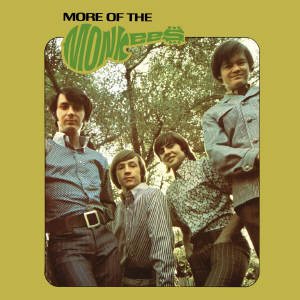
Written by Hombre Divertido
In 1966, the legendary Don Kirshner, who was the Head of Music for Columbia Pictures’ Screen Gems, which produced television shows such as Gidget, I Dream of Jeannie, and Bewitched, was called upon to craft a soundtrack for a show about an out-of-work rock band and their madcap adventures. Kirshner said that he would outsell The Beatles, and people laughed. They laughed until The Monkees sold four million copies.

Rhino has re-released The Monkees on CD, as well as the follow-up album More of the Monkees. These CDs along with the insert booklet penned by Andrew Sandoval who authored The Monkees: The Day-by-Day Story Of The 60’s TV Pop Sensation, tell an extremely interesting story, and offer insight into not only the creation of each song, but the selection process for each album.
Whether your opinion of The Monkees is “Who?”, “Stupid television show”, “Milli Vanilli of the Sixties”, “Some guys with a television show who made good music”, or something in between, you can’t help but be intrigued by this piece of both music and television history.
The numerous hands in this cookie jar, or monkee cage if you will, are evident in these two albums as the style of music ranges from bubble gum pop to country, and from rock to pure novelty. Even the style differences of The Monkees themselves were extreme, and though it would appear that their input was minimal when this adventure began, you still get insight into them as individual artists.
With the first album containing “(Theme from) The Monkees”, “Take a Giant Step”, and “Last Train to Clarksville”, and the second outing holding “Mary, Mary”, “(I’m Not Your) Steppin’ Stone”, and “I’m a Believer”, you can see not only that both contain what would be called Monkees classics, but you can also see the evolution of the music.
By releasing the two albums separately, Rhino stays true to the original vision, and the inclusion of some of the cuts that did not make the cut, as well as different versions of songs, really paints a complete picture. Unfortunately, providing us with both the stereo and mono versions of all the tracks looks like they were trying to fill space. Some may say that here is too much filler here, but reading the inserts while listening to the songs create an atmosphere that pulls you into the studio, and includes you in the process.
Recommendation: This is a must for the true fan of The Monkees or television and music history. The diverse style of music contained in these collections would fit well into anyone’s music library.